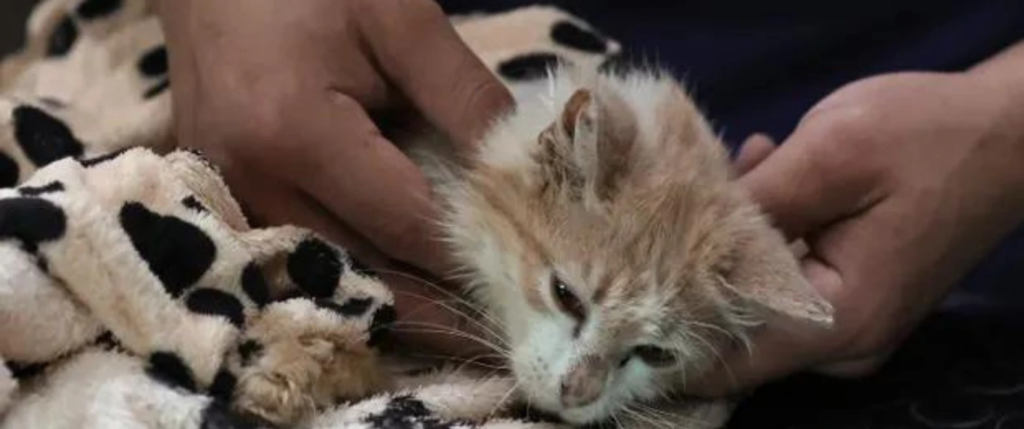Article written by Hannah Devlin and Linda Geddes
Originally published by The Guardian (Tue, Jul 18, 2023)
‘Alarming’ reports of sudden rise in feline infectious peritonitis thought to point to more virulent strain
Thousands of cats have died in Cyprus, according to experts who are warning that a more virulent strain of a feline coronavirus is causing severe illness. Separately, dozens of cats have died after being infected with avian flu in Poland.
The reports have raised questions about whether there is any connection between the rises in deaths and whether, given that many have pet cats at home, there is any evidence of an increased risk to people.
The outbreak in Cyprus involves a feline coronavirus – not linked to Covid-19 – that also circulates in cats in the UK, but which does not infect people. The virus normally causes only a mild stomach upset, but can lead to feline infectious peritonitis (FIP), where white blood cells become infected, spreading the virus through the cat’s body and triggering an often fatal inflammatory reaction in the abdomen, kidneys and brain.
Earlier this year, vets reported a sudden increase in the number of cats suffering from FIP in locations across Cyprus, rising from three and four PCR-confirmed cases in 2021 and 2022 respectively to 98 cases in January.
Last week, Dinos Ayiomamitis, the head of the Cat Protection and Welfare Society (PAWS) Cyprus, made the dramatic claim that an estimated 300,000 cats had died from FIP since January, although he later clarified that this was a rough calculation based on an estimated 20-30% mortality among the island’s approximately 1 million cats.
“We haven’t validated these numbers yet,” said Dr Charalampos Attipa, a senior lecturer in veterinary clinical pathology at the University of Edinburgh and one of the scientists investigating the outbreak. He said the latest figures showed cases had increased by a multiple of 40, year on year. “Definitely the numbers are in the thousands, but the exact [number] is hard to say.”

Either way, Attipa said the development was “very alarming” and pointed to a more virulent strain in circulation. The Edinburgh team has carried out genome sequencing to establish whether the virus has mutated. If so, it is possible that the pandemic has indirectly driven the emergence of a new strain: since cats can be infected with Covid-19, many carry new antibodies that could have driven the evolution of existing feline coronaviruses.
Vets in Lebanon, Turkey and Israel, which also have large stray cat populations, were anecdotally reporting similar increases, Attipa said, although there is no evidence of a similar pattern in the UK or Europe. The spread of the virus within the UK would probably be slower as there are fewer stray cats and FIP is treatable, although the antivirals can cost about £5,000 a treatment.
The British Veterinary Association (BVA) is advising that cats being imported from Cyprus should be tested before travel and not moved if they test positive.
Dr Justine Shotton, a senior vice-president at the BVA, said: “The reported cases of feline infectious peritonitis (FIP) in Cyprus are understandably concerning. However, FIP is a condition seen in cats in the UK and so while tests are ongoing to determine if this is a new strain of the virus, our current advice for cat owners is to contact their vet if they have any concerns about their pet’s health or welfare and discuss any preventative healthcare options.”
Meanwhile, Polish authorities are investigating an outbreak of highly pathogenic H5N1 bird flu in domestic cats. As of 11 July, 29 cats had tested positive for H5N1 influenza from 13 regions of the country. Symptoms included breathing difficulties, bloody diarrhoea, and neurological symptoms. Eleven of the cats have died and a further 14 have been euthanised.
Although sporadic infections of H5N1 influenza in cats have previously been reported, “this is the first report of a high numbers of infected cats over a wide geographical area within a country”, the World Health Organization said.

Deaths in other mammalian species are also increasingly being reported, including pet dogs, farmed mink, seals and sea lions.
Dr Gregorio Torres, the head of science at the World Organisation for Animal Health, said: “There is a recent paradigm change in the ecology and epidemiology of avian influenza which has heightened global concern as the disease spread to new geographical regions and caused unusual wild bird die-offs, and alarming rise in mammalian cases.”
Investigations into the source of the cat infections is continuing, but possibilities include direct or indirect contact with infected birds or their environments, and eating infected birds or food contaminated with the virus. Of the 25 cats for which information is available, two lived outdoors, 18 were indoor cats with access to a balcony, terrace or garden, and five were kept completely indoors. Seven of the cats reportedly had the opportunity for contact with wild birds.
None of the cats’ owners appear to have been infected. As of 12 July, none of the 70 people who had been in contact with cats that tested positive for the virus had reported symptoms. For this reason, the risk to cat owners and vets who have been exposed to infected cats is assessed as low to moderate, and the risk to the general population as low.
However as a precaution, the European Food Safety Authority has recommended that owners keep their cats indoors, and dogs on a lead in areas where extensive circulation of H5N1 influenza in wild birds has been confirmed. Global health organisations are also closely monitoring circulating viruses for any signs that they are becoming more dangerous to humans.

